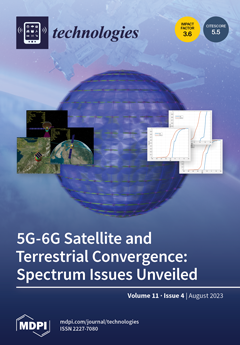Furaltadone (FLD) is an antibiotic drug that is widely treated for coccidiosis, intestinal infection, and turkey blackhead. Moreover, excessive use of FLD may have some negative consequences for humans and domestic animals. Therefore, practical, sensitive, selective, and facile detection of FLD is still
[...] Read more.
Furaltadone (FLD) is an antibiotic drug that is widely treated for coccidiosis, intestinal infection, and turkey blackhead. Moreover, excessive use of FLD may have some negative consequences for humans and domestic animals. Therefore, practical, sensitive, selective, and facile detection of FLD is still needed. In this exploration, a Eu
2(WO
4)
3-nanoparticles-modified screen-printed carbon electrode was developed for the low-level detection of FLD. Hydrothermal techniques were used effectively to prepare the Eu
2(WO
4)
3 complex. Scanning electron microscopy and X-ray diffraction investigations were used to confirm the Eu
2(WO
4)
3. The results revealed that the Eu
2(WO
4)
3 was well formed, crystalline, and uniformly distributed. Furthermore, the electrochemical behavior of the SPCE/Eu
2(WO
4) electrode was examined by differential pulse voltammetry and cyclic voltammetry studies. The SPCE/Eu
2(WO
4) electrode demonstrated improved electrocatalytic activity in the detection of FLD with a detection limit of 97 µM (S/N = 3), linear range of 10 nM to 300 µM, and sensitivity of 2.1335 µA µM
−1 cm
−2. The SPCE/Eu
2(WO
4) electrode detected FLD in the presence of 500-fold excess concentrations of other interfering pollutant ions. The practical feasibility of the SPCE/Eu
2(WO
4) electrode was tested on different antibiotic medicines and showed adequate recovery. Moreover, the SPCE/Eu
2(WO
4) electrode shows appreciable repeatability, high stability, and reproducibility.
Full article





